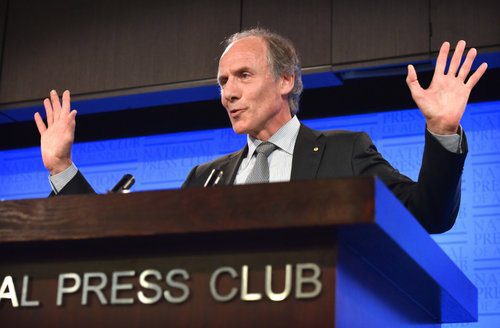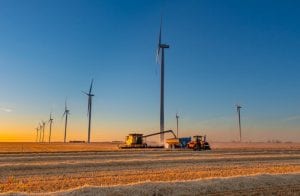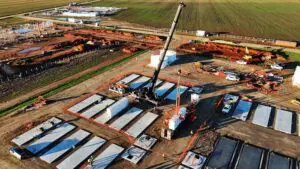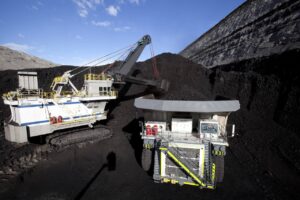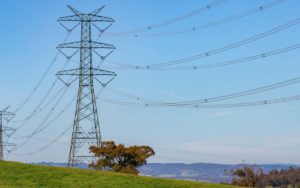
Imagine a situation where an entire nation’s media and political system got caught up in frenzy of concern about government policy initiative that existed in press release only.
That’s what’s been unfolding over the last 6 months.
Quite frankly you couldn’t dream up the crazy set of events that have driven fears that South Australia is a sign of the threats to come to power supply reliability and price from lots of renewable energy.
The Chief Scientist’s report provides a rational discussion about the future energy security of the National Electricity Market but is surrounded by an environment of ridiculous hysteria and fear.
Leading the charge in spreading fear has been Adelaide’s one main newspaper, the Adelaide Advertiser.
According to the Adelaide Advertiser the SA Labor Government is responsible for the blackout they suffered in September and is also responsible for driving the state’s electricity prices up to some of the highest in developed world. According to the Advertiser it’s all due to the South Australian government’s madly ambitious rush to achieve a 50% renewable energy target.
What is rather strange about this is that back when the Weatherill Government announced this 50% renewable energy target in September 2014, the Adelaide Advertiser was very eager to publish an article I wrote that was scathing of Weatherill and his target – South Australia’s ‘do nothing’ renewables target. The article began,
Yesterday the South Australian Government announced a target to achieve 50% renewable energy in its electricity mix by 2025.
Wow, sounds impressive and it is. But if it is achieved it has precious little to do with anything the South Australian Government has done.
You see the SA Labor Government have been pulling these clever little PR stunts for many years now, pioneered by the climate change PR gesture master Mike Rann.
The way it works is SA public servants assess the likely amount of renewable energy that will be installed in SA within the next few years as a result of the Federal Government’s Renewable Energy Target. Then the South Australian government take this projection and duly claim it as an ambitious target that they are setting for themselves.
And what exactly will the SA Government be doing itself to achieve this ambitious target?
Precisely nothing.
Wind power was attracted to SA not because of Mike Rann but because of the state’s high underlying wholesale electricity prices. This is due to SA’s historical heavy reliance on costly gas and the concentrated ownership of power generation.
SA’s residential electricity prices are inflated again by its unusually peaky air conditioner demand for power that has required paying for lots of network capacity that is only rarely utilised. Plus the state, unlike others, has avoided subsidising residential electricity.
This has meant SA’s homeowners have been more enthusiastic adopters of solar systems than other states. You see SA’s high electricity prices were the cause of its high amount of renewable energy, not the other way around. A doubling in gas prices since the establishment of LNG facilities has then made SA’s situation even worse.
But the episode gets even more farcical. The media have unquestioningly published the Prime Minister and national Energy Minister criticism that the South Australian Labor Government can’t keep the lights on.
Yet as part of a Howard Government initiative, South Australia and other eastern states agreed to hand over their energy regulatory responsibilities to national institutions – the Australian Energy Market Commission (AEMC), Australian Energy Regulator and Australian Energy Market Operator (AEMO).
It is these bodies that hold the responsibility of ensuring the lights stay on and they report, not to SA alone but also the Federal Government, Victoria, NSW, Queensland and Tasmania.
If the Federal Government was so worried about SA’s level of renewable energy why didn’t they request a rule change from the AEMC to address it several years ago?
Yet this saga gets crazier still because those that are using the SA blackout as proof that renewable energy is a threat to power system reliability got the cause of the blackout completely wrong.
When South Australia was plunged into darkness last September power system experts like Barnaby Joyce, Nick Xenophon and the ABC’s political correspondent Chris Uhlmann were quick to pronounce that it was the fault of SA’s wind turbines having hit high-wind speed cut offs.
Uhlmann observed: “40% of South Australia’s power is wind generated, and that has the problem of being intermittent – and what we understand at the moment is that those turbines aren’t turning because the wind is blowing too fast. ”
It turned out they were wrong. Pictures soon emerged of major transmission powerlines buckled over as a result of several tornados. The Bureau of Meteorology observed that the state was subject to “one of the most significant severe thunderstorm outbreaks in recent decades”.
A subsequent investigation by the Australian Energy Market Operator ruled out turbine’s high-wind speed cut-outs as a factor. Indeed AEMO made the following observation in third report on the SA blackout:
AEMO assessed the risks to the power system in SA and the likelihood of damage to the network or wind turbines cutting out due to high winds….. High winds were expected to reduce the output of some wind farms but, based on prior experience, the reduction in output could be expected to occur gradually, and the expected loss of output could be accommodated using the spare capacity on the Heywood Interconnector already set aside to manage credible contingency events.
But there was an extraordinary turn of luck for the likes of Uhlmann, allowing them to claim vindication, ignoring they’d actually been completely wrong.
Conservative electrical protection software settings in two models of wind turbines nearby to where the transmission towers toppled led a significant number to disconnect rapidly after several of the transmission lines were taken out by the storm.
The fact that these software settings were quickly and easily changed, and that other models of wind turbines behave differently, so that such a problem will never be repeated – well that was a complexity the protagonists weren’t much interested in exploring.
Nor did they seem interested in the fact that such extraordinary damage to transmission lines almost always results in widespread power outages in areas where wind farms are non-existent. And as for examining the probability of such an extraordinary storm occurring again? Forget about it.
Let’s get this straight – the reason we’re debating energy security issues right now is not because we are facing some imminent, high probability risk to electricity system reliability.
Yes, it’s true that if the Federal Government took its commitment to the Paris Climate Agreement seriously then we would need to make adjustments to our electricity system to accommodate much higher levels of renewable energy.
But so far the Federal Government has ruled out just about any policy that would deliver such a goal: no regulated closure of coal generators, no expansion of the renewable energy target, no emissions intensity constraints. And as for expanding the budget funding for the Emission Reduction Fund – did anyone notice the Federal Government is threatened with credit rating downgrades?
Last October, the National Electricity Market achieved 25% renewable energy and there was no blackout. There are technologies available now that are a lot cheaper than batteries that would allow us to go far further while maintaining high reliability. Finkel recognises this.
But the debate about energy security right now is being predominantly driven by people who aren’t really interested in technological solutions. They’re actually far more interested in politics.
Tristan Edis is Director – Analysis & Advisory with Green Energy Markets. Green Energy Markets assists clients make informed investment, trading and policy decisions in the areas of clean energy and carbon abatement. Follow on Twitter: @TristanEdis

